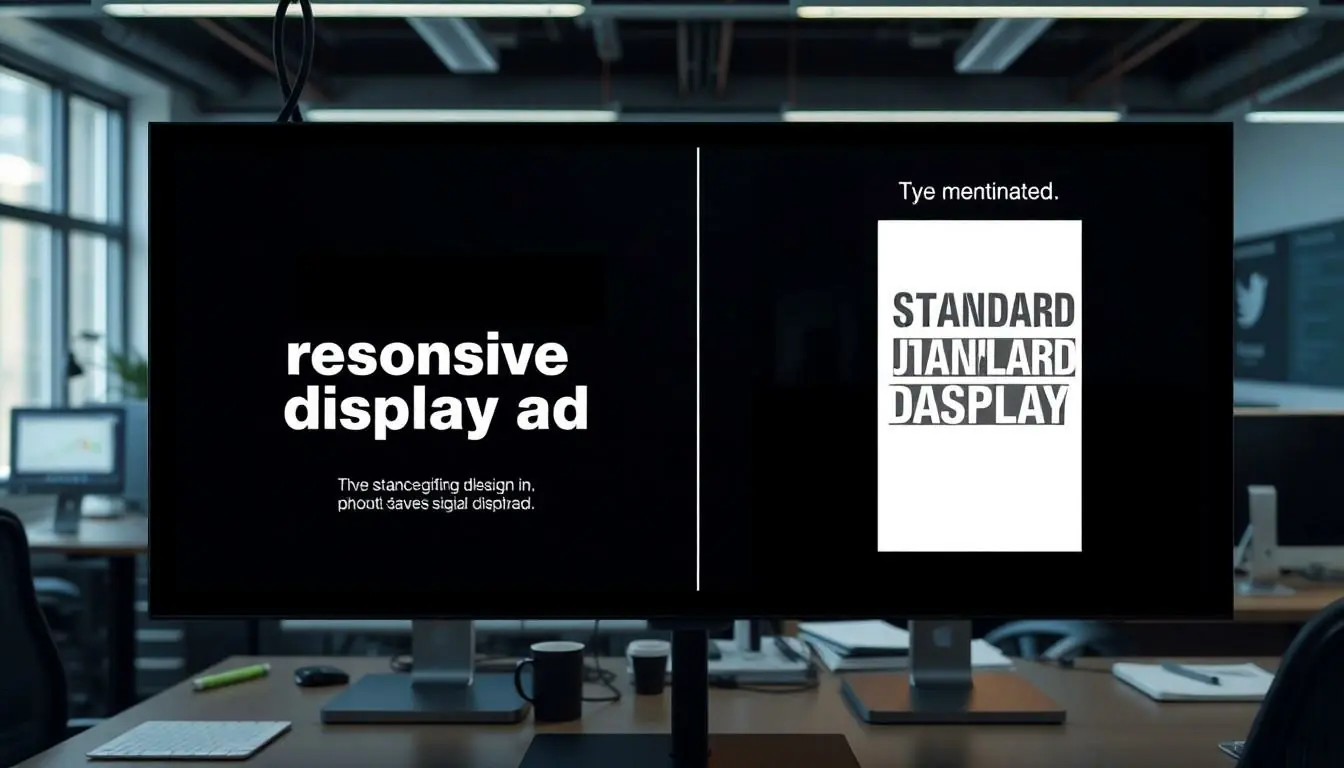In the bustling world of digital marketing, Google Display Ads stand out like a neon sign in a dark alley. But with so many options, how does one even begin to navigate this colorful landscape? Fear not! Understanding the two main ad formats can turn your campaign from “meh” to “wow” faster than you can say “click-through rate.”
Table of Contents
ToggleOverview of Google Display Ads Campaigns
Google Display Ads campaigns utilize two main ad formats that effectively capture audience attention. These formats include image ads and responsive ads, each serving distinct purposes and advantages.
Image ads consist of static or animated visuals that showcase products or services. They can be customized to reflect brand identity while engaging potential customers through eye-catching designs. Advertisers benefit from the ability to directly influence the visual presentation, ensuring alignment with marketing strategies.
Responsive ads adapt automatically to fit various ad spaces across the Google Display Network. By uploading multiple assets like images and text, Google’s algorithm optimizes ad combinations for better performance. This flexibility enhances reach and increases the potential for higher engagement rates among diverse audience segments.
Both formats play crucial roles in maximizing campaign effectiveness. Image ads offer controlled branding opportunities, while responsive ads ensure ads render well on any device and context, improving visibility. Focusing on these formats can significantly enhance advertising outcomes.
By investing time to understand these ad formats, advertisers can refine their campaigns and achieve better return on investment. Using the right format depends on specific campaign goals and audience targeting strategies. Each format presents unique opportunities tailored to various marketing needs, allowing for broader and more effective engagement.
Main Ad Formats
Google Display Ads primarily utilize two ad formats: responsive display ads and standard display ads. Each format offers unique advantages, catering to various marketing objectives and audiences.
Responsive Display Ads
Responsive display ads automatically adjust their size, appearance, and format based on available ad space. Advertisers upload multiple assets, such as headlines, descriptions, and images, leading to dynamic ad creation. Flexibility characterizes this format, as it ensures optimal performance across different devices and screens. Enhanced reach reflects its strength, allowing advertisers to engage users while ensuring ads fit seamlessly within diverse environments.
Standard Display Ads
Standard display ads feature fixed sizes and formats, consisting of either static or animated images. Advertisers control the design and brand messaging, allowing them to maintain a consistent look across campaigns. This predictability aids in building brand recognition as users encounter familiar visuals. Specific dimensions must be adhered to, aligning with Google’s specifications. While standard display ads offer less adaptability than responsive options, they provide strong branding opportunities within set parameters.
Benefits of Each Ad Format
Understanding the advantages of each ad format can enhance advertising effectiveness. Each format offers unique benefits tailored to specific campaign needs.
Benefits of Responsive Display Ads
Responsive display ads provide flexibility by adjusting to fit various ad spaces. This adaptability increases reach across devices, engaging users wherever they are. Advertisers benefit from enhanced performance through dynamic ad creation, using multiple assets like images and text. Improved relevance is achieved as these ads align with user preferences in real time. The automated optimization leads to higher click-through rates, ultimately driving more traffic and conversions. Responsive display ads also save time during the creation process since advertisers do not need to design multiple sizes separately.
Benefits of Standard Display Ads
Standard display ads present a simple and consistent approach through fixed sizes and formats. Advertisers maintain control over branding, ensuring that the presentation aligns with brand identity. Familiarity fosters recognition, making these ads effective for targeted audiences. Featuring static or animated visuals, they capture attention and convey a clear message. The predictability of standard ads guarantees that viewers see the exact design intended. Moreover, they are ideal for specific placements, targeting sites where brand visibility is crucial. Overall, standard display ads serve as a reliable option for advertisers seeking to reinforce brand identity and messaging consistency.
Choosing the Right Ad Format for Your Campaign
Selecting the appropriate ad format is crucial for maximizing a Google Display Ads campaign. Image ads serve as a direct method for showcasing products or services. Advertisers can design these ads with static or animated visuals, allowing for strong brand alignment. Customization often leads to greater engagement with the target audience.
Responsive ads adapt flexibly to various display environments. Their automatic adjustments enable them to fit seamlessly across devices and placements. By uploading multiple assets, advertisers can generate dynamic ads that cater to user preferences and behaviors. This adaptability often results in improved performance metrics, including click-through rates and conversions.
Responsive display ads often provide broader reach compared to standard formats. They facilitate engagement on multiple devices, ensuring advertisers connect with users effectively. Real-time optimization enhances performance further, allowing campaigns to adjust based on audience interactions.
Standard display ads maintain a level of control that many advertisers appreciate. Fixed sizes and formats aid in preserving brand identity and messaging consistency. These ads are particularly beneficial for campaigns focused on specific placements or branding initiatives. Familiarity with these consistent elements can strengthen recognition among targeted audiences.
Understanding the benefits associated with each format allows advertisers to refine their strategies effectively. Prioritizing responsive ads can lead to greater flexibility and higher engagement levels. Conversely, emphasis on standard display ads may strengthen brand positioning through consistent exposure. By aligning ad formats with campaign goals and audience targeting efforts, advertisers can achieve optimal results, enhancing their investment returns.
Conclusion
Understanding the two main ad formats in Google Display Ads is crucial for any successful digital marketing strategy. Image ads offer a straightforward way to showcase products or services with a focus on brand identity. On the other hand, responsive ads provide flexibility and adaptability, ensuring optimal performance across various devices.
By choosing the right format based on campaign goals and audience targeting, advertisers can significantly enhance their reach and engagement. This strategic alignment not only improves click-through rates but also maximizes return on investment, making it essential for advertisers to leverage these formats effectively.





